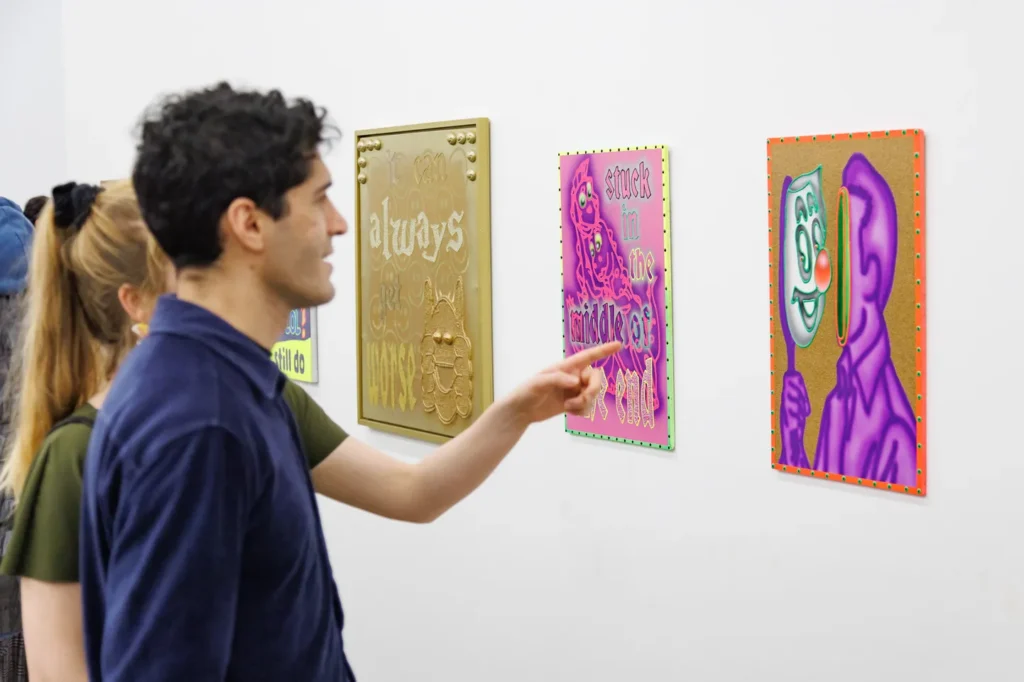The 2025 Art Basel & UBS Global Art Market Report1, compiled by Arts Economics, has been published. The report covers trends and statistics from the 2024 art market and includes a dedicated survey of art intermediaries (galleries, dealers, advisors).
Artrovert gallery’s gallerist Siim Raie has selected the key insights from the report.
Key takeaways from the report:
For the second year in a row, the global art market is in decline – in 2024, the total global market volume was $57.5 billion, a drop of 12% from the previous year.
Online sales also declined, totaling $10.5 billion, or 18% of the overall market.
However, the number of transactions increased by 3%, with a total of 40.5 million artworks bought and sold.
The sharpest drops occurred in the higher price segments and among the largest intermediaries. Auction house sales fell by 20% (public auctions -25%, private sales +14%).
Only the sales of small galleries with an annual turnover under $250,000 showed growth.
While almost all price segments declined, the only growing segment was for artworks priced up to $5,000, with a 13% increase in the number of transactions.
One reason for the sharp contraction at the top end of the market is that during uncertain times, high-value works are simply not offered for sale.
Galleries working exclusively with contemporary art experienced the largest revenue declines (11% total). Those dealing with older, modernist, and post-war art, or across multiple periods, were more stable. The antiquities market also declined by 11%.
59% of total market turnover is generated by intermediaries (galleries, dealers, advisors), 31% of whose sales occur at art fairs. Auction houses account for the remaining 41%.
Researchers estimate there are currently around 300,000 active art intermediaries globally.
A separate survey within the report covered 1,600 art businesses across 58 countries. 50% work solely in the primary market, 9% in the secondary, and 41% in both. Among them, 40% focus on contemporary art, 17% post-war, 12% modernism, 4% impressionism, and 3% Old Masters.
59% of all works sold were paintings, 15% sculptures, 11% works on paper (prints/drawings), 7% prints and editions, 3% photography, 1% film, video, and installations. 85% of gallery sales were paintings.
The average gallery sold 157 artworks annually (median: 75).
75% of sold works were priced under $50,000, while only 2% were priced over $1 million.
The average primary market gallery represents 23 artists, while galleries operating in both primary and secondary markets represent 35 artists.
In uncertain times, buyers tend to prefer established, mid-career artists – 56% of an average gallery’s turnover comes from its top three artists, and the most successful one alone generates a third. Many galleries in the survey reported a lack of collector interest in emerging artists.
The average gallery has 72 collectors per year.
The average gallery hosts 8 exhibitions annually.
The average sales period for an artwork is 11 months – 10 months in the primary market, 14 months in the secondary market.
A positive development is the increase in new buyers – galleries reported that 44% of their buyers last year were new clients, accounting for 38% of total turnover.
The share of NFT or crypto art has fallen so low that it is no longer included in the total market figures – only remnants remain of the 2021 boom. Several platforms have shut down, the total transaction volume was just $213 million, and the number of active traders was 5,620.
In 2024, a total of 336 art fairs were held worldwide.
UBS sees the largest upcoming influence on the market, aside from global instability and crises, as the massive intergenerational wealth transfer – an estimated $84 trillion will shift from one generation to the next in the coming decades, and their art preferences differ significantly.
Many intermediaries fear a contraction in cross-border trade due to the spread of protectionist and economically nationalist policies. The international art market has thus far been relatively deregulated and barrier-free.
NB! The “average” is a statistical average – an actual average gallery does not exist 😉
NB2! Primary market = artwork sold for the first time; Secondary market = artwork resold.
¹ The Art Basel & UBS Art Market Report 2024
Photo: Opening of the exhibition “Tallinn-Berlin-Tallinn: Don’t Think, Just Jump” by Kennet Lekko, Kristen Rästas, and Paul Kormašov at Artrovert Gallery. Photo by Mihkel Maripuu.



